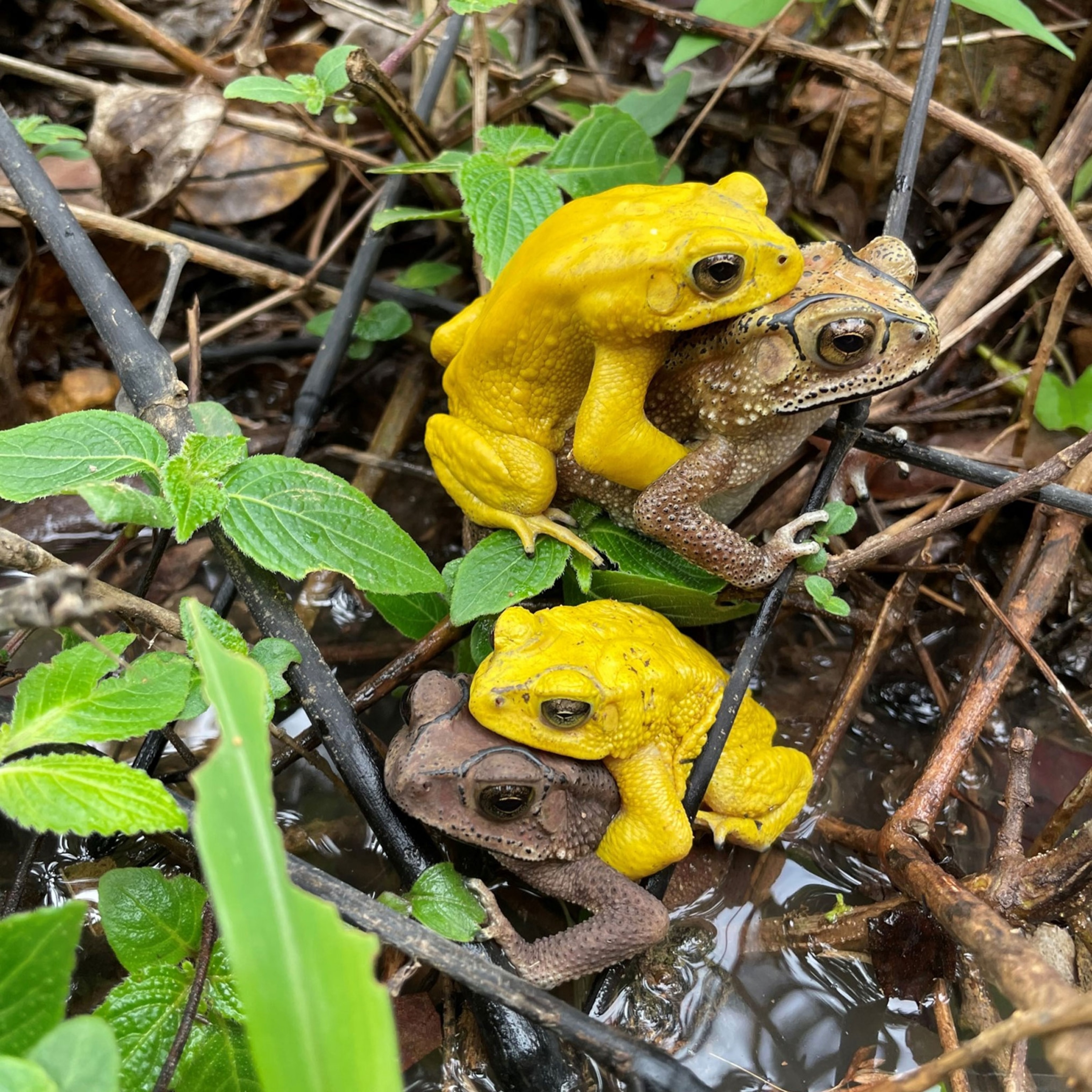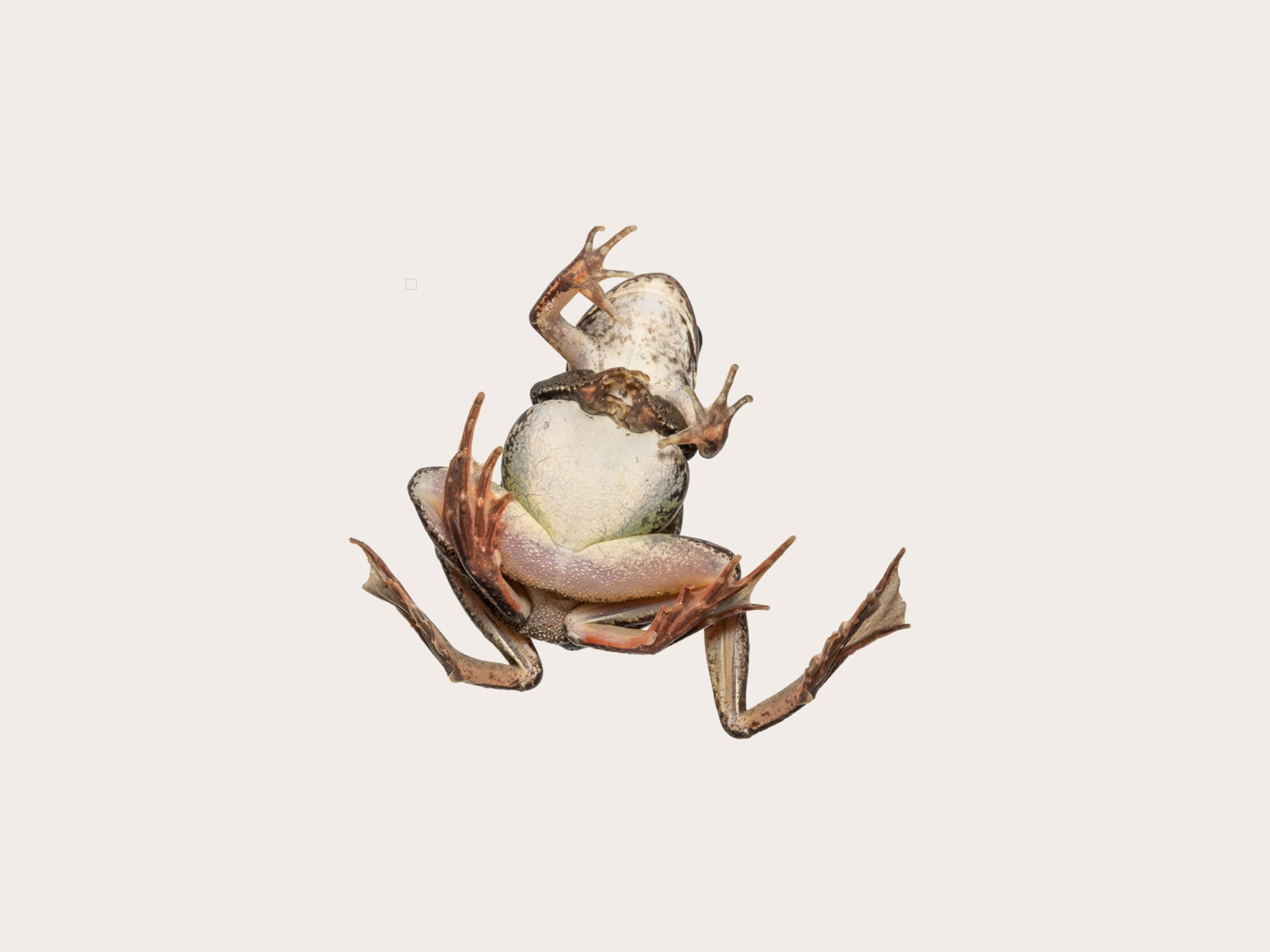
Two new species of see-through frog named in Ecuador
The amphibians, which live only 13 miles apart, look completely alike but are genetically diverse—a surprise to scientists.
Barely 10 miles from Ecuador’s capital city Quito, the wrinkled slopes of the Andes shelter one of the most biologically diverse and threatened spots in the tropics.
At the foot of the Andes here lies a valley. The river running through it, called the Guayllabamba, is at the heart of a remarkable tale of two newly identified species of glass frogs.
One of them, Hyalinobatrachium mashpi, lives on the southern side of the river, in the Mashpi and Tayra Reserves, two private, adjacent rainforest oases that together encompass 6,200 acres. The other frog species, Hyalinobatrachium nouns, dwells in the northern flank of the valley in the Toisan Range, a steep complex of mountains isolated from the main Andes belt, an island floating above a green sea.
(New Frog Species Reproduces Like No Other)
Both creatures exist at roughly the same altitude, in similar humidity and temperature conditions. They both measure between 1.9 and 2.1 centimeters from snout to vent (a standard length measure of amphibians). Their bodies are nearly identical to the naked eye, with lime-green backs peppered by black dots arranged around yellow spots.
Underneath, they both show the calling card of the glass frog: a completely transparent belly revealing a red heart, a textured white liver and digestive system, and, in the females, a pouch of greenish eggs. (Read about a new species of glass frog discovered in Ecuador in 2019.)

“At first, when we started to collect them, we thought they were the same species,” says Juan Manuel Guayasamin, an evolutionary biologist at Universidad San Francisco de Quito, and the lead author on a paper describing the new species, published this week in the journal PeerJ.
But when he and his colleagues analyzed the frogs’ DNA more closely, “we were surprised to learn they actually sport large genetic differences.”
Sussing out new frogs
There are 156 known species of glass frogs living throughout the neotropics, mainly in the northern Andes and Central America.
For the past decade, Guayasamin, a National Geographic Explorer, and his colleagues have been collecting glass frog DNA samples, both by tramping through the rainforest and by gathering specimens from museums and private collections in several countries.
So far, the researchers have sequenced some genes for about 90 percent of the 150 existing glass frog species, he says. That’s how they found that H. mashpi and H. nouns diverge genetically by nearly five percent, a large gap for such otherwise similar amphibians.
Also surprising, Guayasamin says, is that both groups live geographically very close, about 13 miles apart from each other. (Read about an ‘extinct’ toad rediscovered in Ecuador.)
Because the Guayllabamba River valley is drier and ecologically unique from the adjacent slopes, “what we are thinking is that the valley has kept these frogs from mixing with each other,” says Guayasamin. “When you have populations separated by a geographic barrier, you start having an accumulation of mutations in each group, and in time, they become genetically different.”

This is what scientists call cryptic diversity—in other words, the characteristics that differentiate a species are not visible to the naked eye, says study co-author Jaime Culebras, a researcher at the Andean Condor Foundation, a Quito-based nonprofit that works to conserve wildlife in Ecuador. And cryptic diversity is very common in amphibians.
Besides genetics, researchers used bioacoustics—reproducing and transmitting animal sounds—to determine differences between the frog species in the wild. However, they were only able to record the calls of the male H. mashpi frog and compare the sound with those of other species in the Hyalinobatrachium genus.
“It sounds just like a cricket,” says Culebras, who is also a wildlife photographer. “But then again, some crickets sound just like that frog!”
A wealth of Andean diversity
The identification of the new glass frogs shows how many species are yet to be discovered, particularly in the tropical Andes, says Andrea Teran, a herpetologist at Jambatu Research Center in Quito, who was not involved in the study.
“The topography here is quite complex, with many unexplored niches and hard-to-reach areas, so endemism is very high,” Teran says. “Actually when you talk about amphibians in Ecuador, the most diverse spot is the Andes, not the Amazon.”
In fact, the tropical Andes—a region that includes parts of Venezuela, Colombia, Ecuador, Peru, and Bolivia—is home to more than a thousand amphibian species, twice as many as are in the Amazon.
Some of Ecuador’s amphibians, such as the new H. mashpi, even live close to people, within Quito’s larger metropolitan area, Culebras says.
“People don’t realize that the city extends well into the mountains, housing a staggering diversity of living things,” he says.
However, people and their activities are also a threat to these creatures: Half of the amphibian species in the Andes are seriously threatened by copper and gold mining, he says. (Read about a controversial practice that may help Ecuador’s frogs.)
The International Union for Conservation of Nature lists 10 glass frog species as critically endangered, 28 as endangered, and 21 as vulnerable to extinction. It’s too early to say if H. mashpi and H. nouns are among these imperiled creatures, but Guayasamin suspects they are.
“Once again,” he says, “nature suffers from our short-sighted and uncontrolled extractivism.”








